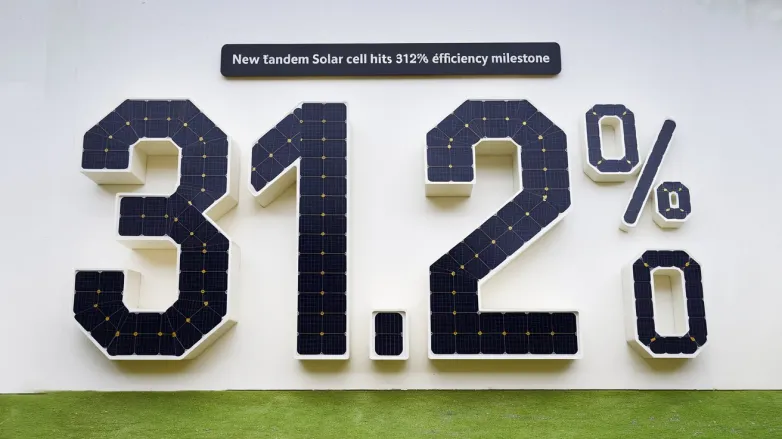New Tandem Solar Cell Hits 31.2% Efficiency Milestone
- Revolutionizing solar energy, a new perovskite-silicon tandem cell achieves 31.2% efficiency, paving the way for scalable, robust, and innovative renewable energy solutions.

Researchers from King Abdullah University of Science and Technology and Helmholtz-Zentrum Berlin have unveiled a perovskite-silicon tandem solar cell that boasts a remarkable efficiency of 31.2%. This achievement is attributed to the innovative incorporation of 2D perovskite layers at the bottom interface, which significantly enhances charge extraction and interface passivation. By utilizing blade coating instead of traditional spin coating, the team addressed scalability issues, making the ink-based fabrication process more suitable for commercial applications.
The panel features a p-i-n inverted device configuration and has demonstrated a power conversion efficiency of 22.6%. During testing under standard conditions, the device maintained approximately 80% of its initial efficiency over 1,700 hours. This groundbreaking work marks a significant step forward in the commercialization of tandem solar cell technology, highlighting the potential for stable and efficient photovoltaic solutions.
How does the new tandem solar cell improve efficiency and scalability in solar technology?
- Enhanced Efficiency through Layering: The novel use of 2D perovskite layers at the bottom interface improves light absorption and reduces energy loss during charge transport. This multi-layer approach allows for capturing a broader spectrum of sunlight, thereby significantly increasing overall cell efficiency.
- Charge Extraction Optimization: Improved charge extraction mechanisms reduce recombination losses, which are a common issue in traditional solar cells. This leads to better performance, especially under varying light conditions, ensuring that more solar energy is converted into usable electricity.
- Robust Device Configuration: The p-i-n inverted device configuration utilized in this tandem cell design maximizes electrical performance and stability, resulting in longer operational lifespans and better performance metrics over time compared to standard configurations.
- Scalability through Blade Coating: The shift from spin coating to blade coating facilitates mass production capabilities. Blade coating allows for larger surface area coverage with consistent quality, making it a more feasible option for manufacturing solar panels at scale, thus reducing production costs.
- Sustainability of Materials: By advancing the use of perovskite materials, which can often be made from abundant and cheaper raw materials, researchers are contributing to the sustainability of solar cell technology. This emphasis on resource availability is critical for long-term industrial scalability.
- Durability Testing: With the cell maintaining approximately 80% of its initial efficiency over a significant test period of 1,700 hours under standard testing conditions, this indicates high durability and reliability. Ensuring such longevity is crucial for market acceptance and competitiveness against traditional silicon solar cells.
- Economic Viability: With improved efficiency and scaling methods, tandem solar cells are positioned to become economically viable alternatives to conventional solar technologies. As manufacturing processes become more efficient, the cost-per-watt can decrease, making solar power more accessible to consumers and businesses alike.
- Integration Potential: The design of tandem solar cells might allow for easier integration into existing infrastructure, such as rooftops and building-integrated photovoltaics (BIPV), paving the way for innovative applications and a wider adoption of solar energy solutions in urban environments.
- Future Research Directions: Continued research and development are essential to further enhance the performance and reduce the production costs of tandem solar cells. Investigating different material combinations and fabrication techniques could lead to even higher efficiencies and broader commercial applications.
- Policy and Incentives: As governments worldwide are increasingly investing in renewable energy, the successful commercialization of tandem solar technology could attract legislative support and potential subsidies, accelerating the transition to cleaner energy sources.
Also read

